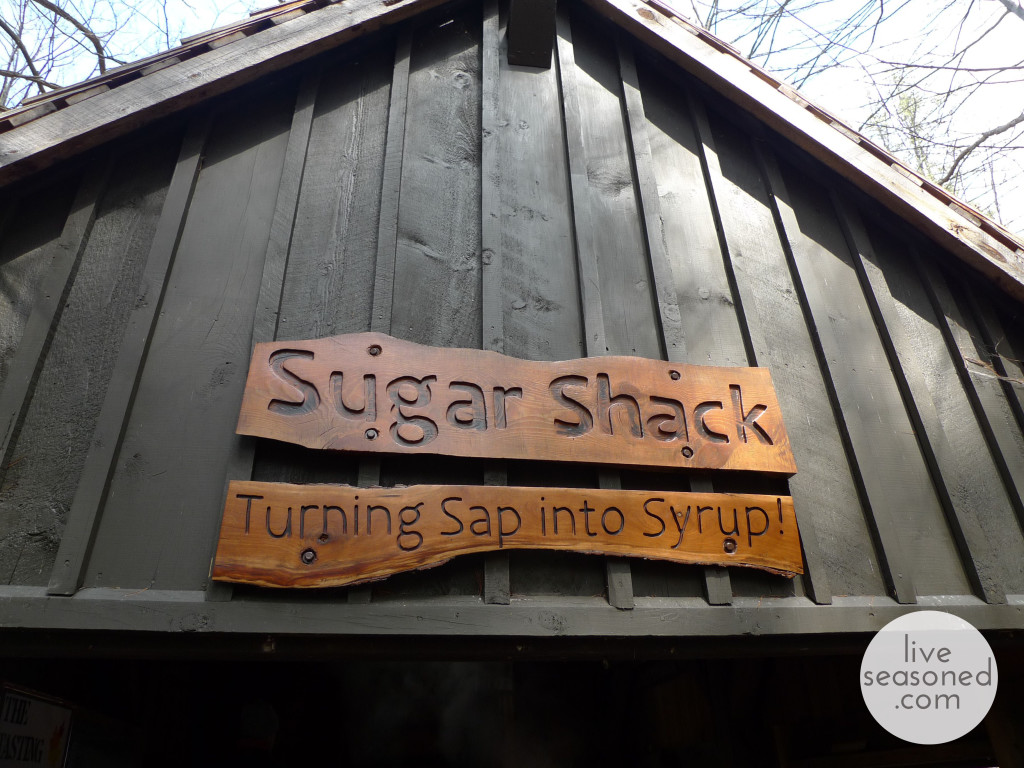Last weekend we finally (finally! I whisper/shout under my breath because I’ve been wanting to go for the past three years.) made it to our local environmental center for their maple harvest festival. As we mentioned in our Welcome March post, this month is prime maple tapping time in PA as the warm weather creeps north. You’re laughing because we started this week with temps in the teens, aren’t you? Well, while everyone agrees that it’s time for winter to throw in the towel, below freezing overnight temps are necessary for a good tapping season.
Why do we tap trees in the spring? When maple trees are growing throughout the summer, they produce starches that are stored in tree’s sapwood. During the fall and spring some of these starches are converted to sugar molecules (mostly sucrose) and stored in the sap allowing it to flow throughout the tree as the temperatures warm. A healthy supply of sap requires water, which is plentiful at this time of year from snowmelt and rain showers. And lastly, the season’s combination of cold nights with temps below freezing and warm days with temps above freezing creates a pressure in the sapwood. When we drill into the tree, that pressure pushes the sap out of the hole and into our buckets!
I was surprised to learn that you can tap more than just Sugar Maples! Black, red, and silver maples can all be tapped, but as you may have guessed, sugar maples have the highest sugar content. The sugar content ranges from 1-6% in sap, and can be measured using a refractometer. On average 40 gallons of sap are required to produce 1 gallon of syrup, which will have a final sugar content of 66-67%. Now for the sad news, on average a single taphole will only produce 15 gallons of sap in a season, but under ideal conditions it is possible to collect 40-80 gallons from that tap!

